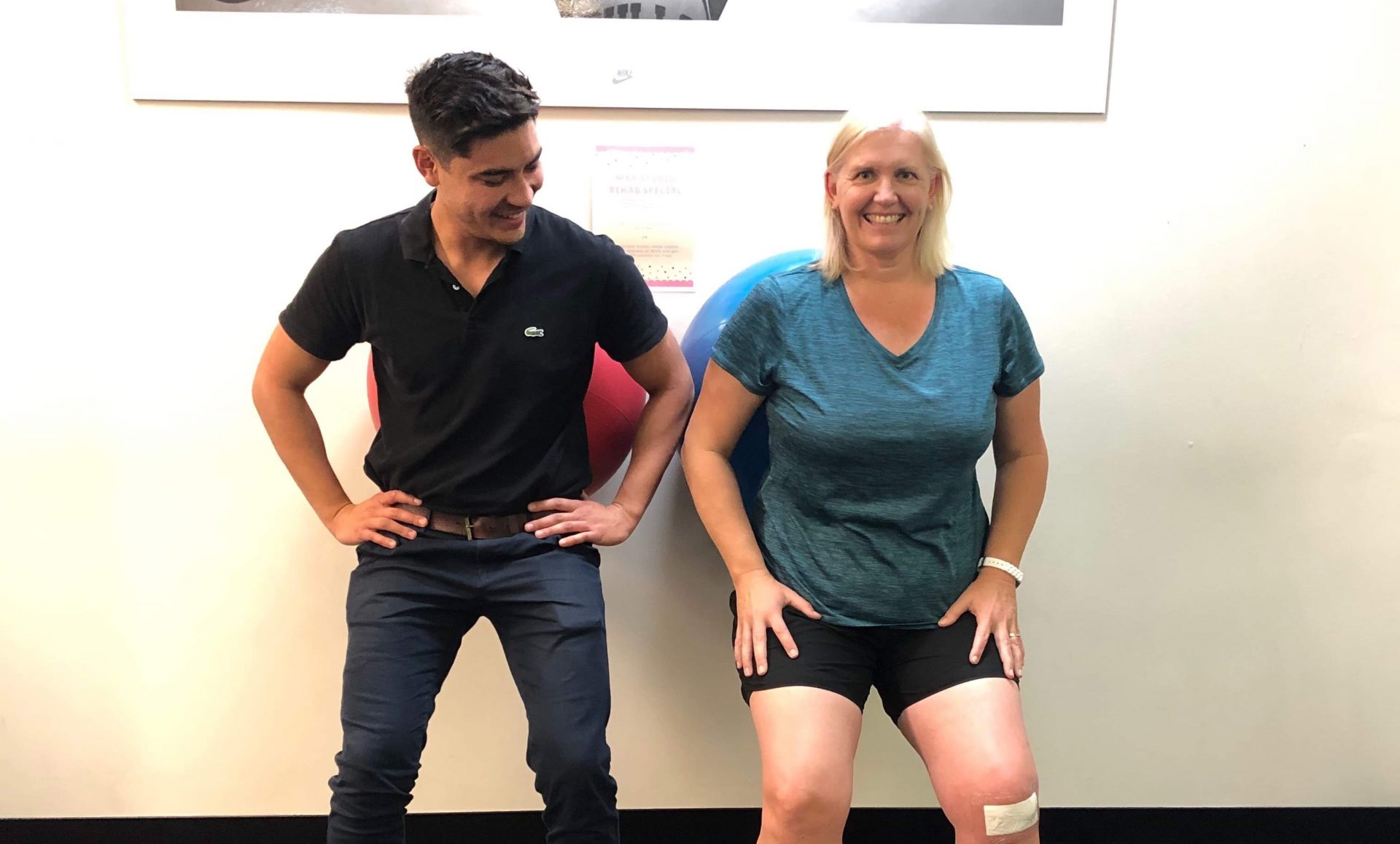ACL (anterior cruciate ligament) injuries are extremely common, with Australia having the highest incidence of ACL reconstructions in the world.
Men aged 20-24 and women aged 15-19 appear to be at the greatest risk.
We’re certainly not ready to say with great certainty, who should and shouldn’t undergo an ACL reconstruction.
Unfortunately, I’ve learned much of this first-hand and decided to share my story and experiences with ACL injury and reconstruction.
My story
In 2007, I first injured my ACL playing Australian Rules Football. I was tackling an opposition player with both feet planted on the ground.
At the same time, the player was tackled by one of my teammates from the opposite direction, resulting in both of them falling on top of me and twisting my knee awkwardly.
I felt immediate sharp pain and ‘pop’ in my knee and was helped off the ground.
The pain settled within a couple of minutes before my knee then swelled up to almost twice the normal size.
At the time, I was diagnosed with just an MCL (medial collateral ligament) sprain.
I was in my first year studying physiotherapy and didn’t really know a whole lot about knee injuries, so I rehabilitated over the next 6 weeks for an MCL sprain.
7 weeks later, I knew something was not quite right, but I’d managed to return to running, kicking and changing direction (certainly not as well as I once did).
7 weeks post-injury I returned to play in our preliminary final. One of the better moments of my short and unsuccessful footy career was snapping a goal from 45 out on my first kickback post-injury.
We went on to win the game but unfortunately fell short in the grand final the following week.
It wasn’t until early 2008 that we finally concluded I’d actually ruptured both my MCL and ACL.
The advice I was given at this stage was to continue my rehab and manage the knee conservatively without an operation, considering all was going relatively well.
So, I did. I managed to play close to a full season in 2008, which was eventually cut short by a fractured clavicle (another injury I’ve unfortunately done twice!).
At this stage, I decided to stop playing football as I couldn’t afford to have any further time away from my studies.
Over the following 4 years, I continued to play basketball quite regularly.
I was able to jump, land, change direction and pivot.
However, my knee never felt quite right.
It would occasionally give way coming down from a rebound resulting in swelling and pain for a few days.
In 2012, I returned to AFL to play a one-off game for one of our lower grade teams.
On my first possession, I planted my foot to side-step an opponent and felt my knee completely give-way.
I hadn’t had an incident like this since my initial injury.
Following an MRI and discussion with multiple physiotherapist colleagues, we decided to go ahead with reconstruction.
My first ACL reconstruction in 2012 was a hamstring graft with partial LARS.
I returned to work around 3 weeks post-op, then started running 13 weeks post-op and played basketball at full capacity around 11 months post-op.
I was extremely pleased with my first reconstruction. 2 years post-op, following a lot of hard work, I could comfortably say that my operated knee certainly felt stronger and more stable than my other knee.
I had few issues other than intermittent hamstring tendon pain and iliotibial band syndrome (ITB) related pain.
I continued to play basketball for the next 6 years without any concerns. I managed to snowboard without any discomfort or instability.
I only made a return to AFL in 2018, in which I managed a full season without any issues with my knee.
In May this year, I went up for a mark at football.
While in the air I was knocked off balance and landed on my right foot.
However, my upper body was in a far-from-ideal position and I re-ruptured my ACL.
In this incident, I unfortunately further damaged my medial meniscus and suffered a new lateral meniscus injury and cartilage injury.
on 30 July I had my second ACL reconstruction – patellar graft, lateral tenodesis, lateral meniscus root repair, medial meniscus stabilisation and medial femoral condyle microfracture.
So far, all is going well.
I certainly feel that having close to 8 weeks between my injury and my operation as helped, as it has allowed me to regain some muscle activation and strength, range of motion and settle the initial inflammatory process from the trauma prior to my surgery.
Compared to my last ACL reconstruction, although my second operation was a lot bigger, I’ve seemed to recover quicker following an 8 week period of ‘prehab’.
The road to recovery is a long one and can often be a bit overwhelming.
However, Setting short-term goals with your physiotherapist and sticking to a well-structured staged rehabilitation program will make the process far less daunting.

